A talk presented at Monktoberfest 2019. Full slides: PDF
Video
Transcript
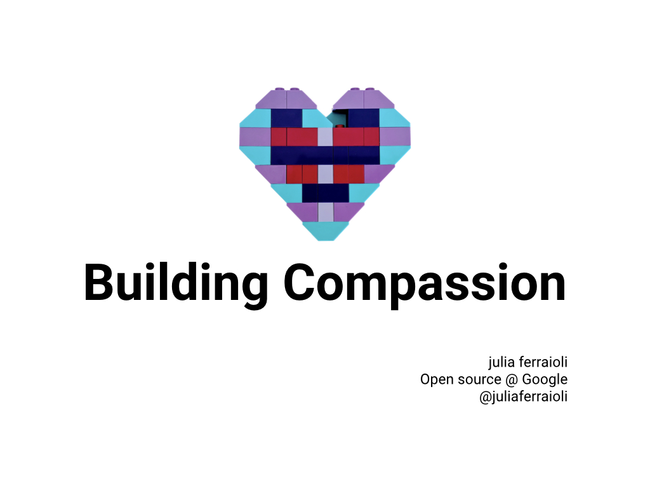 I’m really grateful to be here, thank you Steve for inviting me. I wonder if he really knows what he got himself into! Some people know part what I’ve gone through over the past six years that have led to this talk, but very few people know the impact it has had on me as a person. I’m a pretty quiet person in real life, and typically don’t volunteer a bunch, so this is really the first time I’m going to talk publicly about what the last six years have taught me about being a better technologist, a better colleague, and a better me.
I’m really grateful to be here, thank you Steve for inviting me. I wonder if he really knows what he got himself into! Some people know part what I’ve gone through over the past six years that have led to this talk, but very few people know the impact it has had on me as a person. I’m a pretty quiet person in real life, and typically don’t volunteer a bunch, so this is really the first time I’m going to talk publicly about what the last six years have taught me about being a better technologist, a better colleague, and a better me.
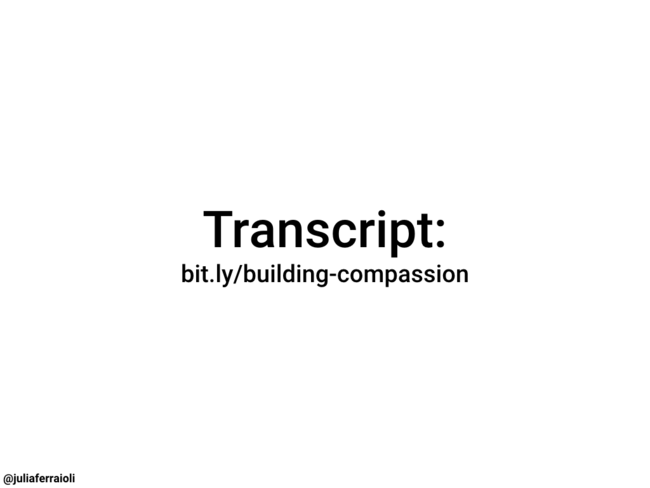 For those who prefer to read along with the talk, here’s a preliminary transcript, and eventually I’ll put the slides and transcript on my site.
For those who prefer to read along with the talk, here’s a preliminary transcript, and eventually I’ll put the slides and transcript on my site.
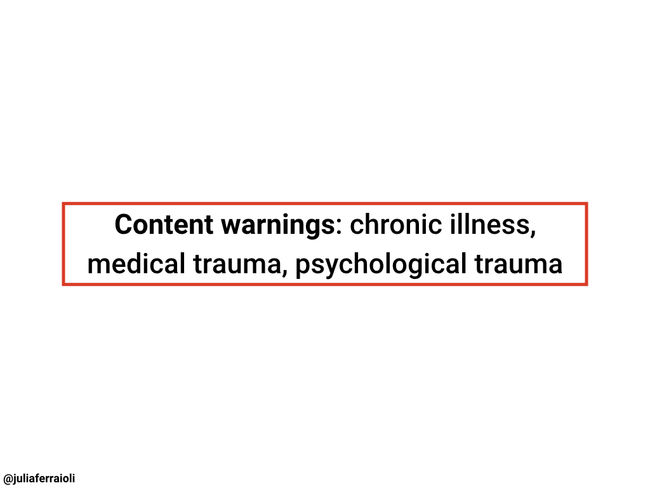 Before we really dive in, I do want to deliver some content warnings. I’m going to talk about ordeals that I went through with chronic illness and medical and psychological trauma. It will not offend me if you decide to sit this talk out; I recognize that it will be hard to hear.
Before we really dive in, I do want to deliver some content warnings. I’m going to talk about ordeals that I went through with chronic illness and medical and psychological trauma. It will not offend me if you decide to sit this talk out; I recognize that it will be hard to hear.
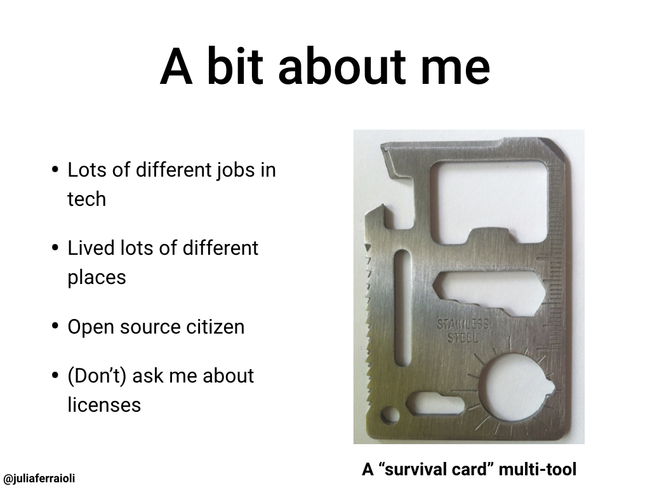 So hi, I’m Julia. I do various things at Google. I’ve been everything from an engineer to a developer advocate and now, I’m doing the job of a technical program manager. I work to make open source a happier, more sustainable place, but I used to work in compliance…so please don’t ask me about licenses.
So hi, I’m Julia. I do various things at Google. I’ve been everything from an engineer to a developer advocate and now, I’m doing the job of a technical program manager. I work to make open source a happier, more sustainable place, but I used to work in compliance…so please don’t ask me about licenses.
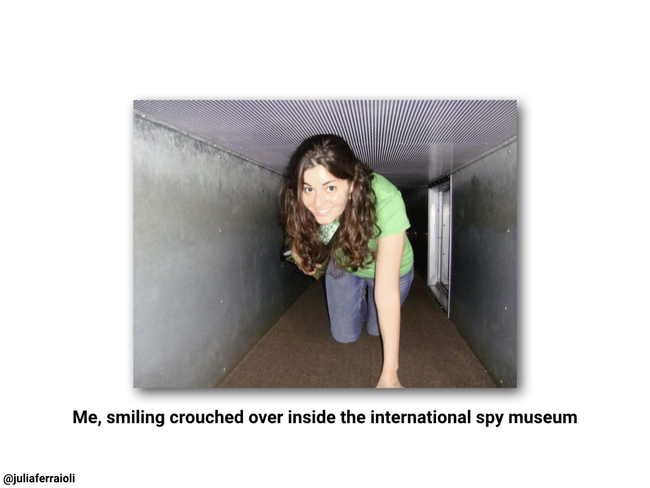
I used to be this person, an internationally unrecognized spy getting glamour shots taken while crawling around in suspiciously carpeted air ducts, able to do really advanced things like bending with impunity, carrying heavy bags without consequences, and putting weight on my wrists. Okay, fine, that’s the International Spy Museum in DC, which is pretty fun.
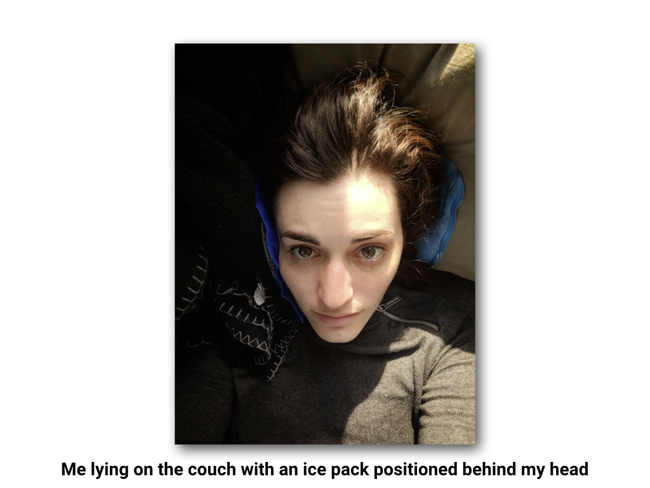 But I’m now this person, and I often describe myself as the walking embodiment of Murphy’s Law, or a biological system that’s experiencing cascading failures.
But I’m now this person, and I often describe myself as the walking embodiment of Murphy’s Law, or a biological system that’s experiencing cascading failures.
There’s been a lot of doctors trying to figure out what’s going on, and while we’ve ruled out a LOT, I am still a bona fide medical mystery at this point. We do know one thing, and that is that a lot of my issues are due to…
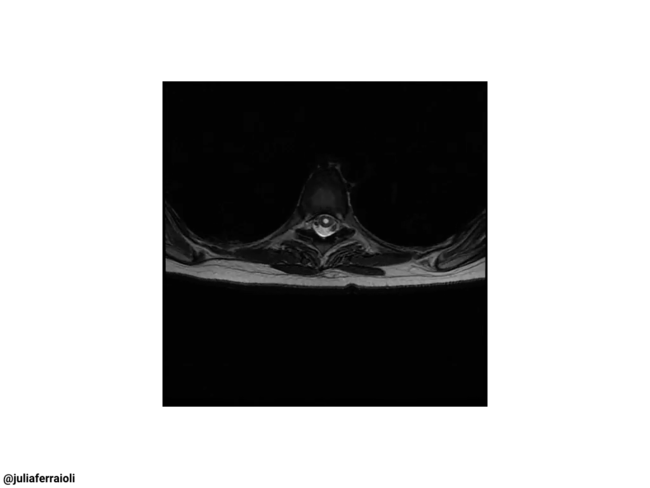 …this jackass — a syrinx, or cyst within my spinal column filled with cerebrospinal fluid. It compresses the nerves in the spinal column, and can actually destroy them. A large enough syrinx can lead to paralysis.
…this jackass — a syrinx, or cyst within my spinal column filled with cerebrospinal fluid. It compresses the nerves in the spinal column, and can actually destroy them. A large enough syrinx can lead to paralysis.
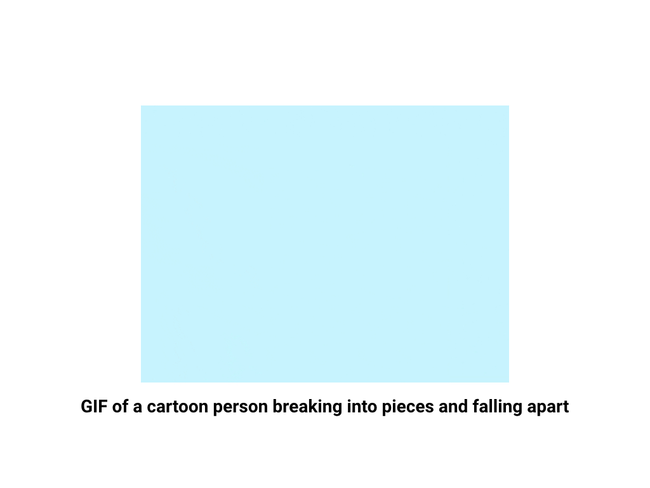 Drastically simplifying things, my body being…itself…means that I’m in constant pain from back, my head, or my joints slipping out of place. I can’t see very well. I don’t feel pain in some parts of my body. I have no idea where my body is in relation to itself, which really doesn’t help with the clumsiness.
Drastically simplifying things, my body being…itself…means that I’m in constant pain from back, my head, or my joints slipping out of place. I can’t see very well. I don’t feel pain in some parts of my body. I have no idea where my body is in relation to itself, which really doesn’t help with the clumsiness.
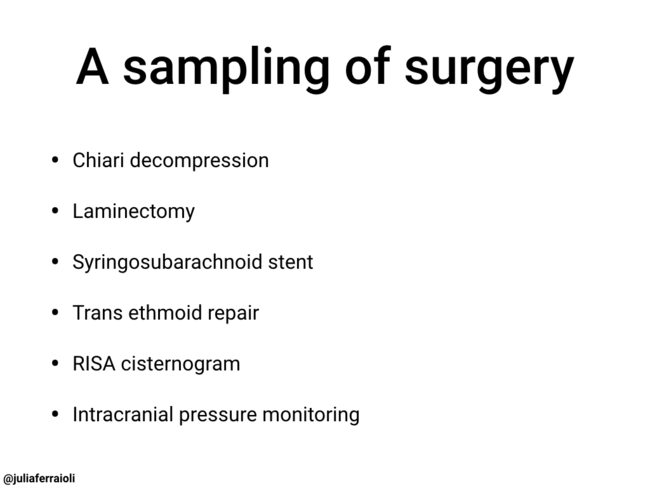 I did have surgery — multiple surgeries, actually — trying to fix the spine, brain, and vision issues. Not only did they leave me in just as bad of a state as I was, they were horribly traumatic. My medical team ghosted me — has anyone here been ghosted by a date? This is worse.
I did have surgery — multiple surgeries, actually — trying to fix the spine, brain, and vision issues. Not only did they leave me in just as bad of a state as I was, they were horribly traumatic. My medical team ghosted me — has anyone here been ghosted by a date? This is worse.
The neurosurgeon who did two of my surgeries canceled my post-op follow up and refused to return my calls, or explain why I was now experiencing new symptoms after the surgery. It’s a really heavy thing, when you get the message that your life doesn’t matter to people tasked with saving lives.
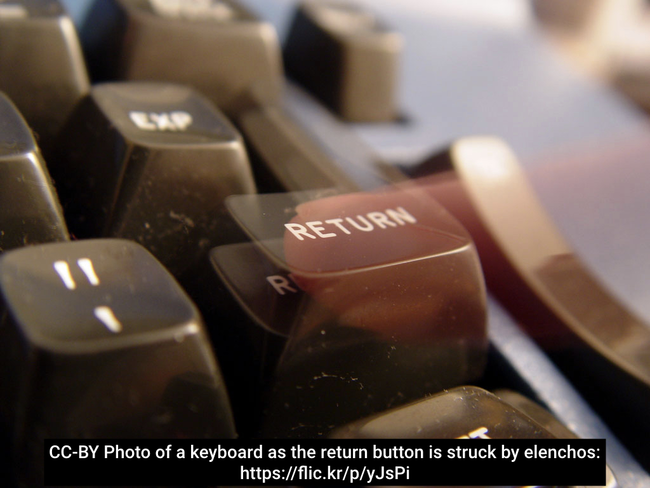 I went back to work after a six month leave because it was one of the few things in my life that seemed solid. I was also bored. Like, really really bored. When you’re on disability, you’re not allowed to do anything that’s part of your job. So I couldn’t code, I couldn’t do any technical blog posts, I couldn’t do a lot of things that I did for fun, because they were also stuff I did at work. What do you do? I watched all of Buffy, again, then Angel, then all of the west wing, and probably a lot of other tv that I don’t even remember — or admit to all of you.
I went back to work after a six month leave because it was one of the few things in my life that seemed solid. I was also bored. Like, really really bored. When you’re on disability, you’re not allowed to do anything that’s part of your job. So I couldn’t code, I couldn’t do any technical blog posts, I couldn’t do a lot of things that I did for fun, because they were also stuff I did at work. What do you do? I watched all of Buffy, again, then Angel, then all of the west wing, and probably a lot of other tv that I don’t even remember — or admit to all of you.
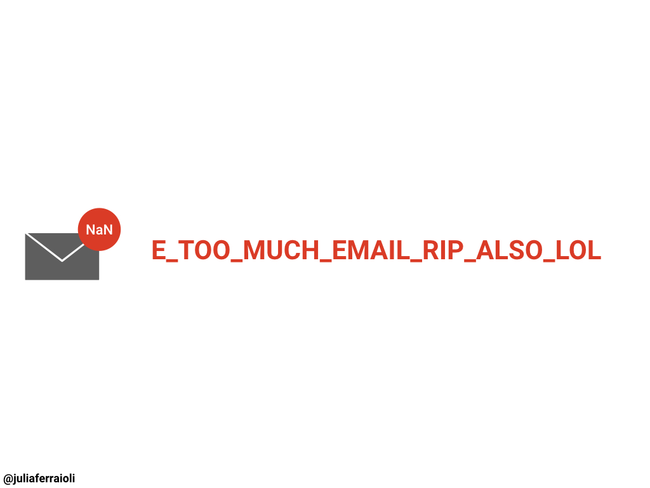 That was…way harder than I thought it would be. Apart from digging myself out of a mountain of email…
That was…way harder than I thought it would be. Apart from digging myself out of a mountain of email…
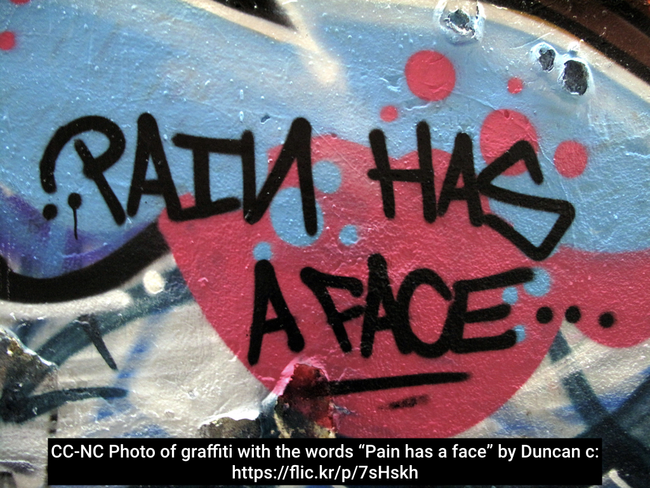 I was in excruciating pain. If you’ve seen that pain scale from 1-10 with faces, I was so far off that scale it was incomprehensible. I wanted to die, every single day.
I was in excruciating pain. If you’ve seen that pain scale from 1-10 with faces, I was so far off that scale it was incomprehensible. I wanted to die, every single day.
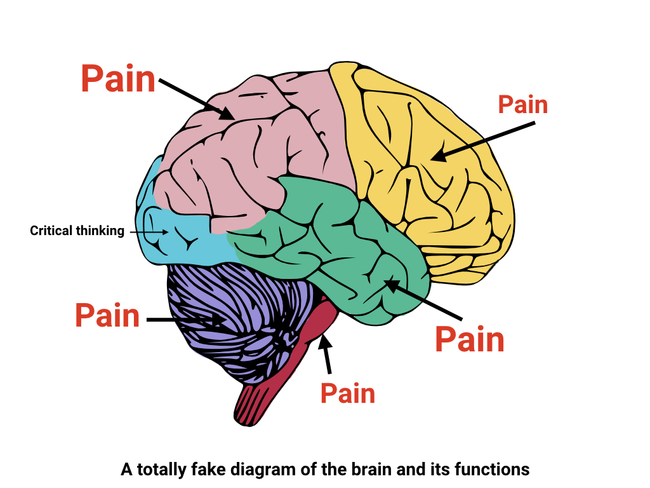 Turns out that when you’re in extreme pain, the majority of your brain is dedicated to processing that pain, to suppressing it, to…making sure you aren’t subjecting others to it. Why? Well…
Turns out that when you’re in extreme pain, the majority of your brain is dedicated to processing that pain, to suppressing it, to…making sure you aren’t subjecting others to it. Why? Well…
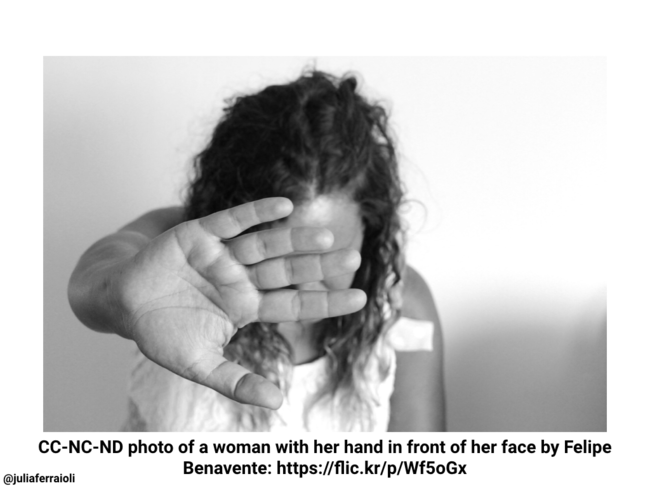 Let’s unpack pain. Our society equates pain with weakness. If we only tried hard enough, meditated enough, did enough yoga, we wouldn’t be in pain, right? And other people don’t want to be around that. So it’s really common for people in pain to pack that pain into a box, hide it out of sight, and then feel shame and isolation because of it. I would literally hide from people, because if they looked at me too long, they’d know and start avoiding me.
Let’s unpack pain. Our society equates pain with weakness. If we only tried hard enough, meditated enough, did enough yoga, we wouldn’t be in pain, right? And other people don’t want to be around that. So it’s really common for people in pain to pack that pain into a box, hide it out of sight, and then feel shame and isolation because of it. I would literally hide from people, because if they looked at me too long, they’d know and start avoiding me.
The question I had, but didn’t know how to ask was…
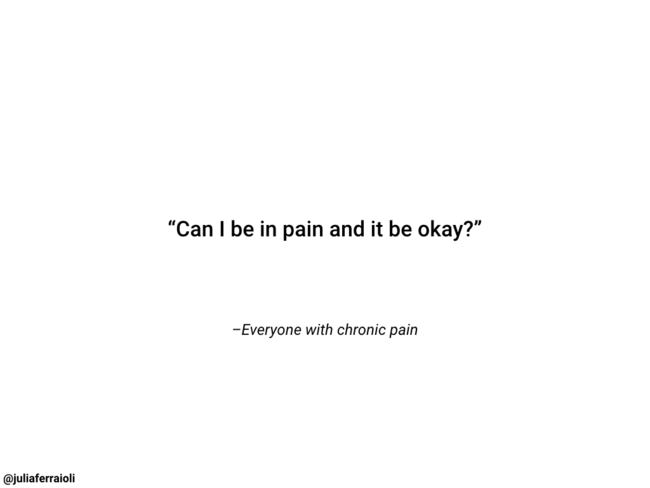 “Can I be in pain and can it be okay?”
“Can I be in pain and can it be okay?”
What we want to hear is “YES”. We want to hear that it’s okay to not hide the pain, the gasps, the stumbles and falls, the fact that we may need medication to control it. People talk about bringing your whole self to work, and people in chronic pain want to be able to bring their whole self to interacting with the world. We want to reclaim that energy that goes into hiding pain from the rest of the world.
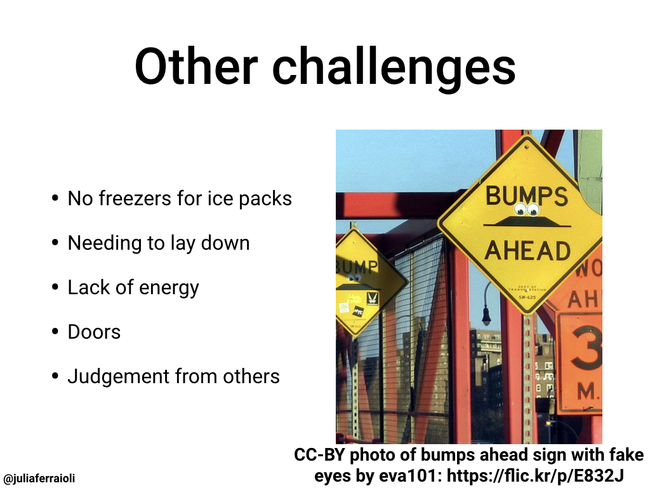 For me going back to work, it wasn’t okay. There were…a LOT of complications.
For me going back to work, it wasn’t okay. There were…a LOT of complications.
From the purely practical of realizing I had no place to store ice packs to the really hard — not being able to open doors on my own. We’re not talking huge security doors, either. Just regular conference room doors. The muscles on either side of my neck and spine had been severed not long ago, and…yeah. That was rough. Especially since I felt like I had to hide that, lest I be judged. And that judgement was nowhere as pointed as in the elevator, when I was going from floor 3 to floor 4.
People thought because I looked okay, that I was. But I was destroyed. I was not the same person as I was before, whatsoever. I was traumatized. I was hurt. I was still planning my exit from life. Many of my colleagues didn’t like dealing with that, or me. So they didn’t, and my career took a serious dive.
What could have gone differently in an alternate timeline?
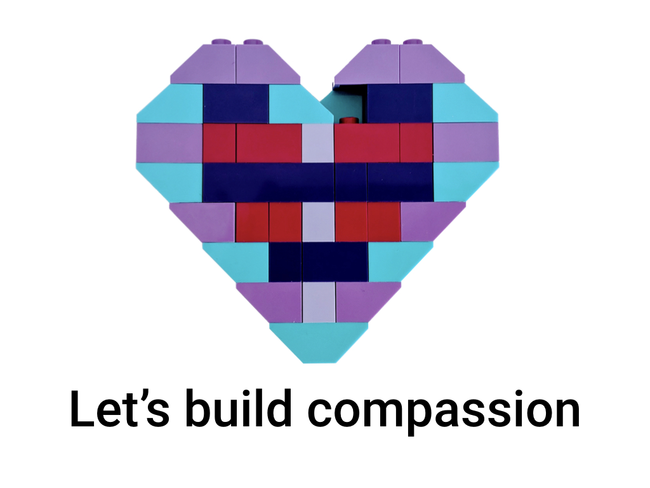 How do we make pain okay? It begins with compassion.
How do we make pain okay? It begins with compassion.
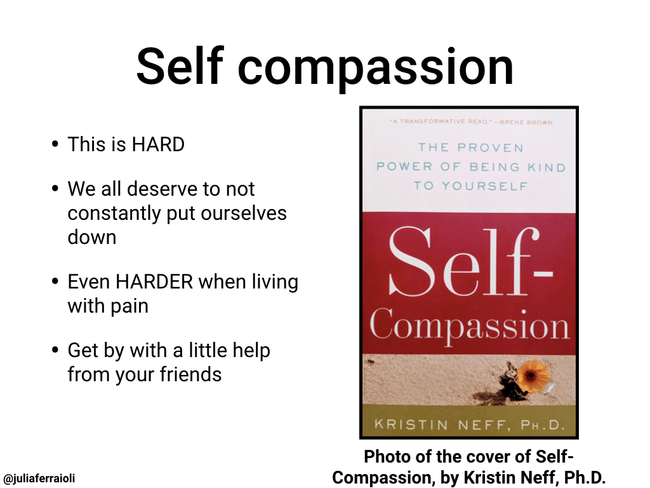 This is one of the hardest things to do, so of course I’m going to dedicate the least time to it. Self-compassion is especially hard in tech, where we glorify publicizing your failures, and minimizing your successes. We are our own harshest critic, aren’t we?
This is one of the hardest things to do, so of course I’m going to dedicate the least time to it. Self-compassion is especially hard in tech, where we glorify publicizing your failures, and minimizing your successes. We are our own harshest critic, aren’t we?
Exercising self-compassion when you’re in chronic pain is extremely hard, because our internalized ableism is this voice that tells you that you don’t deserve compassion because…you’re a drag, or being dramatic, or whatever your brain tells you. But it’s all the more necessary, because celebrating victories — even small ones — is so important.
So how do we practice self compassion? I do recommend this book, which was in turn recommended by my therapist. But even though the “self” in self compassion is a worthy goal, having people you trust help you out is not forbidden! If they’re willing to call you out on being too hard on yourself, that’s a great way to start the process of internalizing that voice of reason.
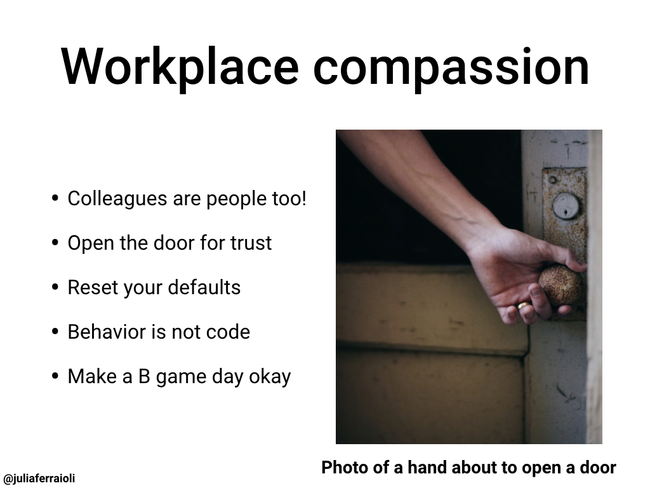 Workplace compassion is pretty hard too. We value productivity over human connection, which is kind of odd, if you think about it. Working with people is what creates that productivity. Our colleagues are people, not robots, yet (well, I might be a robot; I did fail a number of Turing tests). We know that productive teams are ones who connect with each other on a shared humanity level.
Workplace compassion is pretty hard too. We value productivity over human connection, which is kind of odd, if you think about it. Working with people is what creates that productivity. Our colleagues are people, not robots, yet (well, I might be a robot; I did fail a number of Turing tests). We know that productive teams are ones who connect with each other on a shared humanity level.
This is also really helpful for those of us who are disabled. Sure, I can absolutely engage with my manager or a benefits team and have them tell my team that I need documents ahead of meetings, but if I know that I can trust my team, then I can be open about my needs. And they in turn can feel trusted.
Typically, we think of everyone around us as healthy, when that’s almost never true. Approximately 20% of people will experience a disability at some point in their life. Try to reset your default expectations to more accurately reflect reality.
For people with chronic pain, some days we’re going to be able to control it better than others. It’s important to make it okay to have a less than stellar day — for everyone you work with or manage. Don’t encourage people take sick leave if they’re not actually sick (mental health days totally okay of course). While this may seem well-meaning, it actually reinforces that something that a person lives with every day is not okay. If we rephrase our earlier question and make it a statement…
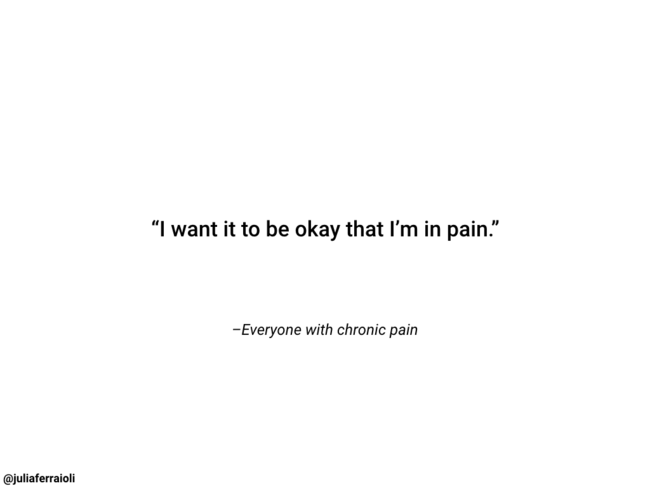 “I want it to be okay that I’m in pain.”
“I want it to be okay that I’m in pain.”
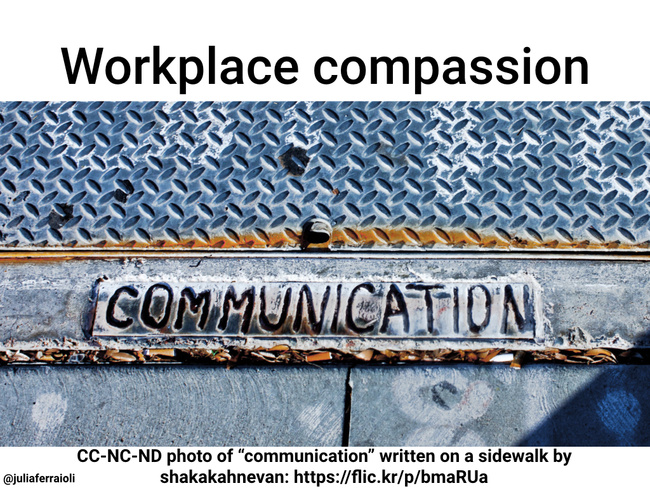 Right, this wouldn’t be a talk about compassion without mentioning the importance of communication. I like to think about communication skills in three stages:
Right, this wouldn’t be a talk about compassion without mentioning the importance of communication. I like to think about communication skills in three stages:
Stage 1: saying what you want to say Stage 2: saying what you want to say in a way that makes your point Stage 3: saying what you want to say in a way that others will hear it
Oftentimes, people stay at stage 2. That leads to a lot of talking past each other, and I know that for me, it led to me not feeling heard, or respected. And I was just coming from a situation where not being heard led me to the conclusion that I wasn’t worth respect or consideration, so it was essentially re-traumatizing me.
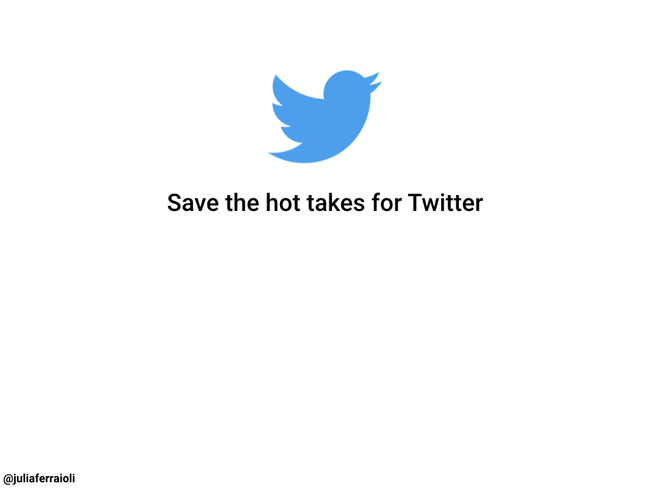 Hot takes in the work place rarely lead to productive conversations, or conversations where someone doesn’t feel hurt. First-to-speak-wins isn’t actually a valid decision-making strategy, and it actually means that you may lose the voices of people like myself, who need longer to process information because of the amount of my brain that’s dedicated to dealing with pain.
Hot takes in the work place rarely lead to productive conversations, or conversations where someone doesn’t feel hurt. First-to-speak-wins isn’t actually a valid decision-making strategy, and it actually means that you may lose the voices of people like myself, who need longer to process information because of the amount of my brain that’s dedicated to dealing with pain.
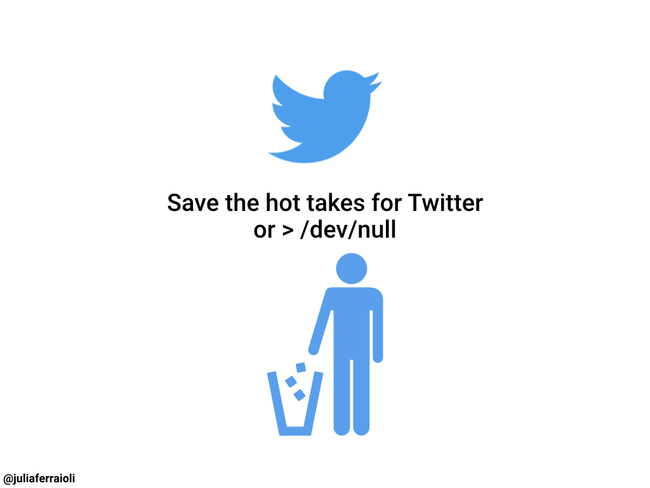 Or, you could send them somewhere else, like /dev/null. Twitter doesn’t really need them either.
Or, you could send them somewhere else, like /dev/null. Twitter doesn’t really need them either.
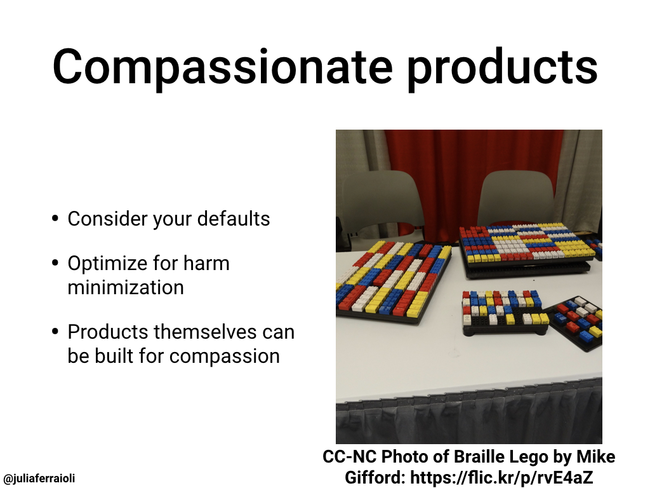 Okay, we’ve solved workplace compassion, right? Well, we’re moving on anyway.
Okay, we’ve solved workplace compassion, right? Well, we’re moving on anyway.
Building compassionate products requires a yet another perspective shift. We generally build products for our idea of who our users are. But what we wind up doing is building for that 80% of people without disabilities and leaving the other 20% out entirely. So re-consider your defaults again, and think about how your products may actually cause harm in some of your users.
I’ll echo Hadley from his talk yesterday: beware numbers. What do I mean? Well, we live in a time when we have turned our lives, our bodies into target numbers. I’m not immune; I’m wearing my FitBit now. But when I hurt myself, or am sick, I have to take it off because I WILL HIT THAT 10K STEPS DAMMIT, which…is not good for my health. Technology has the very real chance of motivating us towards active harm.
It’s a shame when we don’t consider our defaults, because if we rethink them, we can actually build products themselves that are compassionate. Let’s look at some examples.
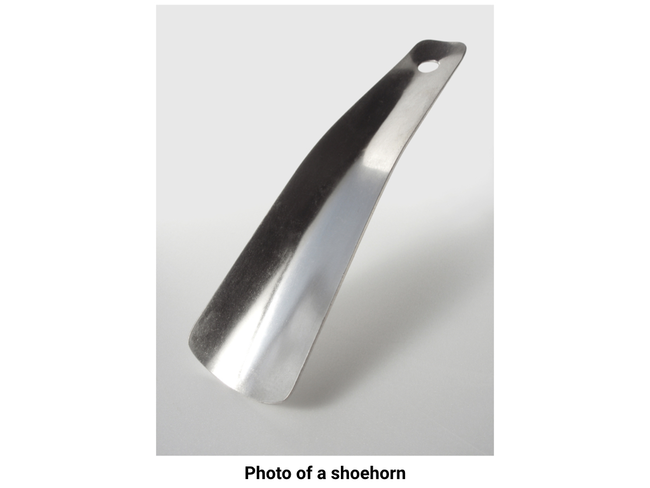 How many people think this is a compassionate product? It’s a pretty neat piece of technology that helps people put on shoes.
How many people think this is a compassionate product? It’s a pretty neat piece of technology that helps people put on shoes.
 How about sliced fruit? Great for people that have tremors, or people like me with poor-to-no depth perception. Or who have arthritis! Super compassionate product.
How about sliced fruit? Great for people that have tremors, or people like me with poor-to-no depth perception. Or who have arthritis! Super compassionate product.
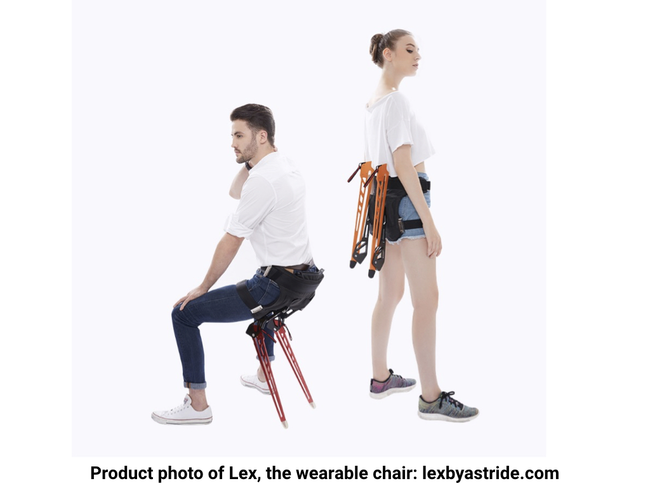 This one crossed my radar recently, and it took quite a bit of heat from folks that wanted to say something cutting on the internet. But for me, this would give me back the ability to go places without checking out seating availability first. Or having to ask for someone’s chair. I think this is full of compassion.
This one crossed my radar recently, and it took quite a bit of heat from folks that wanted to say something cutting on the internet. But for me, this would give me back the ability to go places without checking out seating availability first. Or having to ask for someone’s chair. I think this is full of compassion.
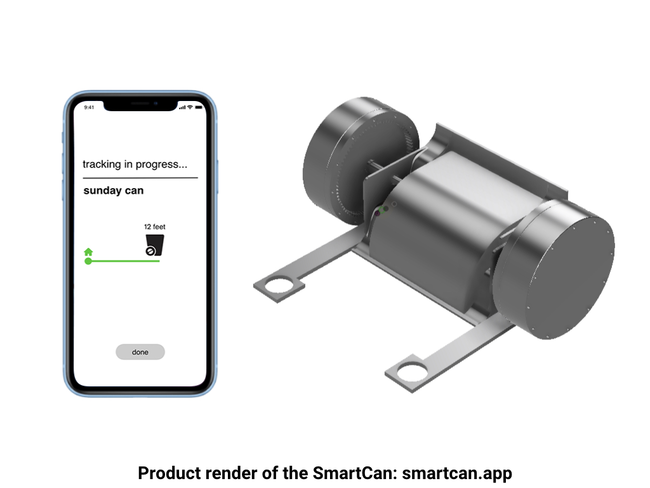 This one came to my attention Wednesday night. It’s an attachment for your garbage can that takes itself out to the curb on the right day. I’m sure it, too, will get mocked, but these are the types of products that are amazing for people with disabilities! There are some days I can take the can to the curb, but my energy is zero sum.
This one came to my attention Wednesday night. It’s an attachment for your garbage can that takes itself out to the curb on the right day. I’m sure it, too, will get mocked, but these are the types of products that are amazing for people with disabilities! There are some days I can take the can to the curb, but my energy is zero sum.
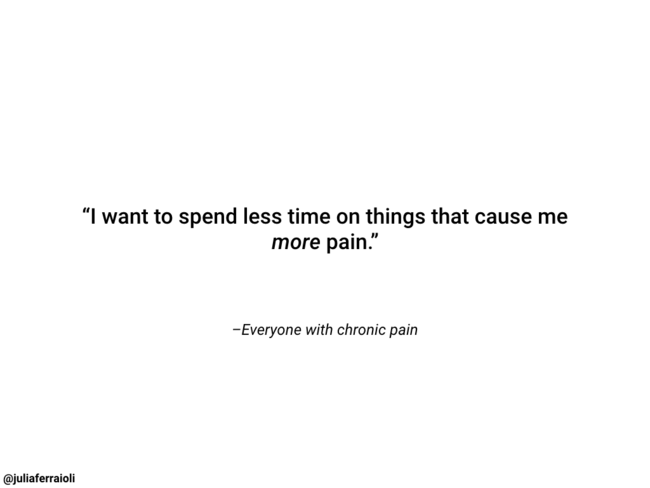 When you’re forced to choose, I’d much rather spend my energy on enjoying my life than recovering from it.
When you’re forced to choose, I’d much rather spend my energy on enjoying my life than recovering from it.
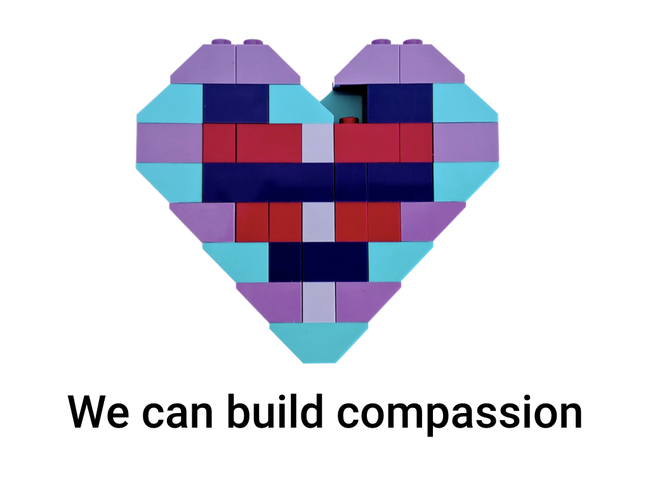 This is what’s great about our industry. We can deliver independence. We can enable joy. We can literally build compassion.
This is what’s great about our industry. We can deliver independence. We can enable joy. We can literally build compassion.
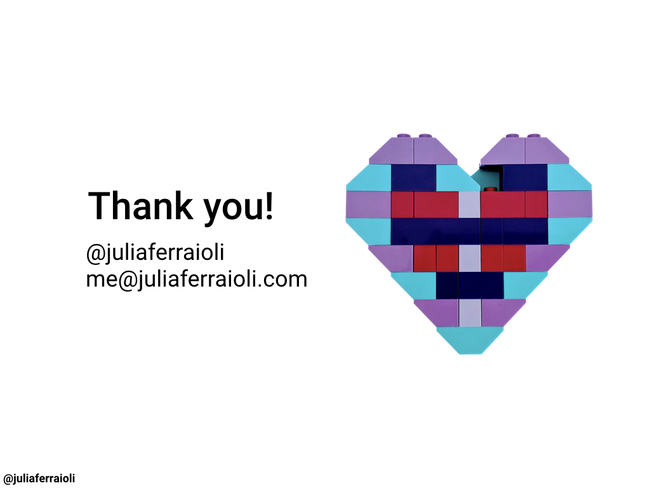 Thank you for sticking with me! I’ll be around for a bit if you would like to chat, or feel free to tweet at me or email me if you prefer.
Thank you for sticking with me! I’ll be around for a bit if you would like to chat, or feel free to tweet at me or email me if you prefer.